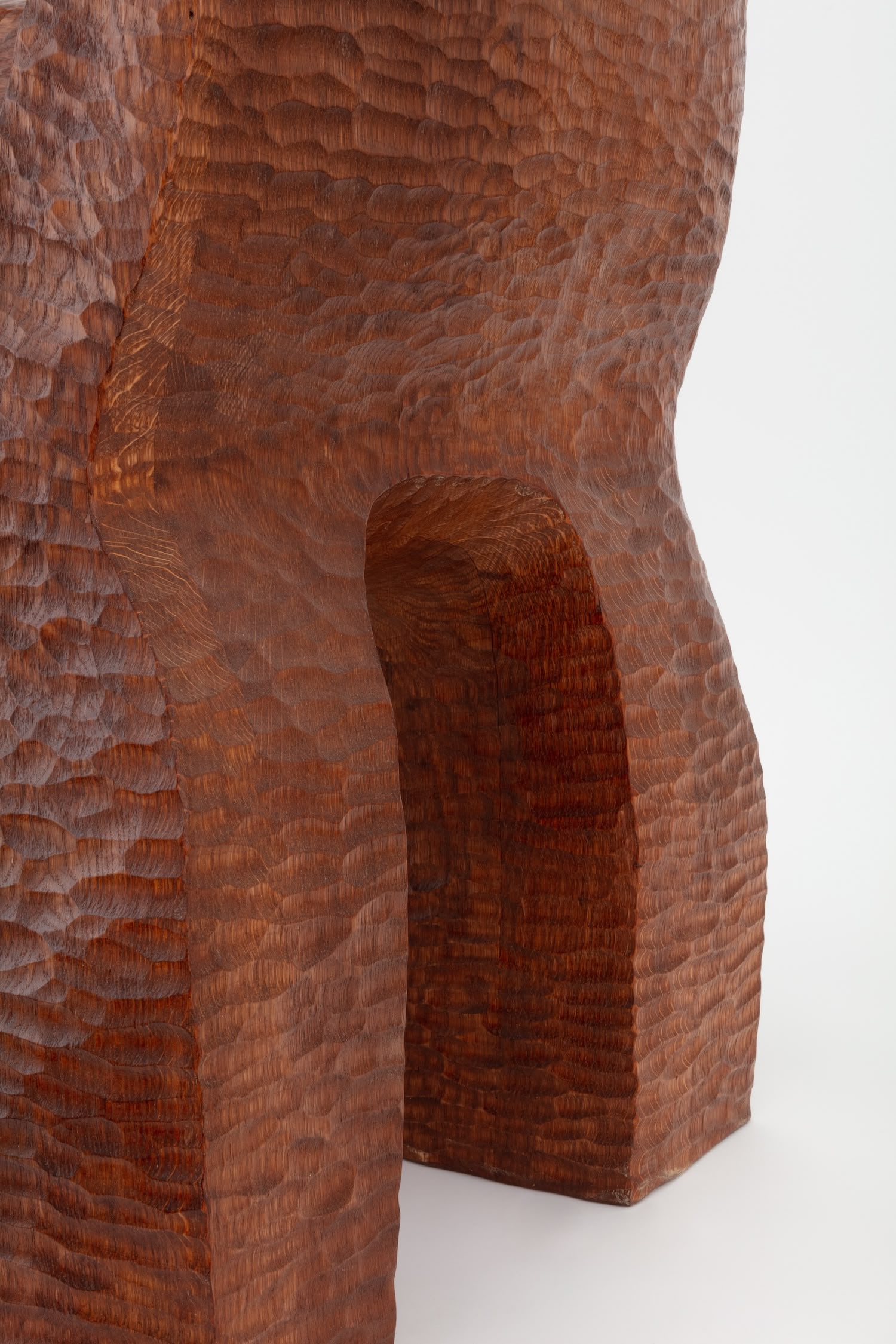Cairn is a minimalist chair created by London-based designer Faye Toogood for Friedman Benda as part of the Assemblage 7: Lost and Found II exhibition. In the rugged elegance of Faye Toogood’s “Cairn” chair, we witness the transformation of English oak into a meditation on time and memory. The chair emerges from solid wood like an ancient marker rising from the landscape, its hand-carved surfaces bearing testament to both geological time and human intervention.
The design’s commanding presence stems from its bold, architectural form – four robust legs support a deeply sculpted seat and dramatically angled backrest. Yet within this monumental structure lies an intimate understanding of the human form. The seat’s gentle concave hollow and the thoughtfully pitched back create an embrace that feels both primitive and precisely considered.
What makes this chair particularly compelling is Toogood’s masterful manipulation of surface texture. Using traditional shellacking techniques that date back to 18th century British furniture-making, she creates a rich tactile landscape across the oak. The finish enhances the wood’s natural grain while adding depths of warmth to its reddish-brown tones. This interplay between rough-hewn and refined surfaces echoes the piece’s conceptual foundation – the tension between the raw and the cultivated.
The name “Cairn” references the human-made stone mounds that have marked significant sites across Britain since prehistoric times. Like its namesake, the chair serves as both functional object and cultural signifier. Its form suggests archaeological excavation – as if Toogood has carefully chiseled away at a solid block to reveal the essential shape within, much like her description of the process as “an archaeological dig.”
This piece represents a compelling evolution in contemporary furniture design, where historical craft techniques meet sculptural thinking. While it nods to modernist sculptures of Barbara Hepworth and Henry Moore in its organic abstraction, it remains deeply rooted in furniture traditions. The result is neither purely functional nor purely artistic – it occupies that rich territory between, challenging our expectations of what a chair can be.







